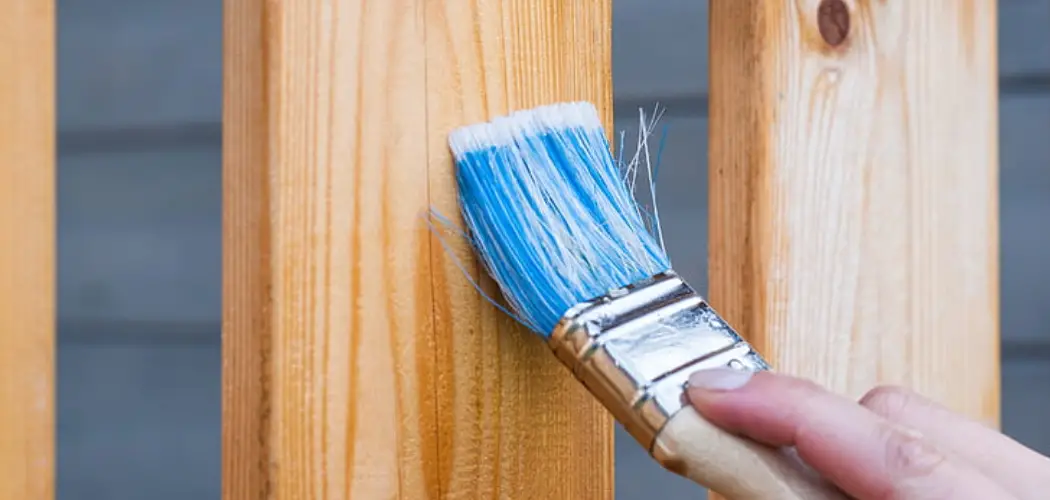Have you ever walked into a room and been mesmerized by the bright, shining finish of the woodwork? It’s almost too beautiful to touch! If you’re like us, then the thought of how to get your own furniture or fixtures looking that glossy has probably crossed your mind.
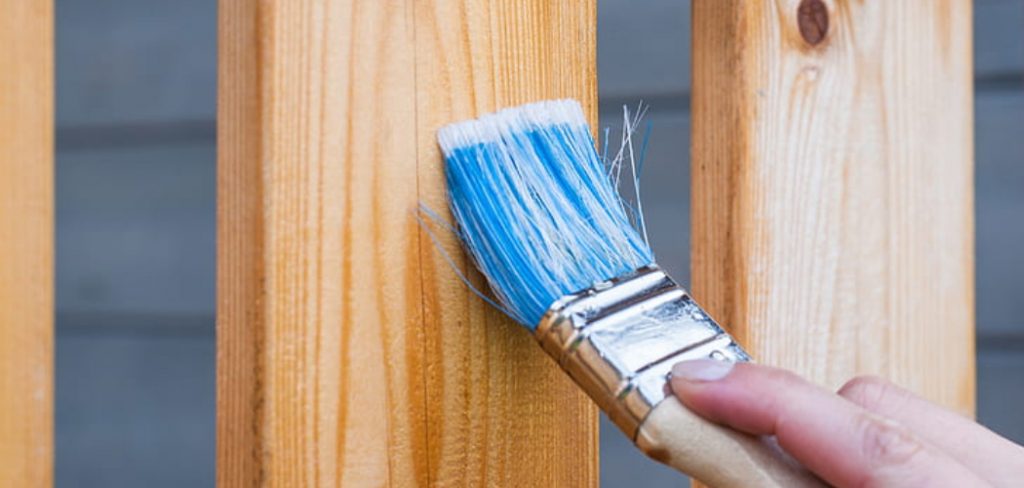
If you already have varnished wood, then the good news is that you don’t have to start from scratch. Varnishing over varnished wood can be done easily with a few simple steps.
Varnishing over varnished wood is an easy yet rewarding feat that will have any project looking its best in no time. We’ll show you how to varnish over varnished wood from prepping to sealing. Whether you’re giving something a fresh start or trying to spruce up existing pieces—this guide will help take your DIY projects from drab to fab!
What are the Benefits of Varnishing Over Varnished Wood?
Varnishing over varnished wood has many benefits. Firstly, it will protect the surface from scratches and damage against everyday wear and tear. It can also add a fresh layer of color to existing furniture, giving it a new life without buying something new. Additionally, the varnish is extremely easy to apply, meaning you can do it at home!
Another great benefit of varnishing over varnished wood is that it keeps the existing finish intact. This means no sanding off old paint or fillers, so you can keep your original piece as-is while still giving it a glossy topcoat.
Overall, varnishing over varnished wood is an easy way to spruce up your existing furniture, make it look more polished, and protect the surface from everyday wear and tear.
What Will You Need?
Before starting, you must ensure you have the right materials for the job. You’ll need a paintbrush or foam brush, sandpaper (150- and 240-grit), tack cloths, a vacuum with brush attachment, a wood stripper, varnish remover, and a polyurethane finish. Make sure to wear protective gloves and a dust mask while you work!
Most of these materials are found at your local hardware store or online. When shopping for varnish, check the labels to ensure it’s suitable for your project—different types will work better with certain woods.
8 Easy Steps on How to Varnish Over Varnished Wood
Step 1. Preparing the Wood
Once you have all of the necessary materials, it’s time to begin. Start by preparing the wood surface for varnishing. Begin by sanding the wood with 150-grit sandpaper and then switch to 240-grit. This will help smooth out any bumps or imperfections on the surface and create a more even finish.
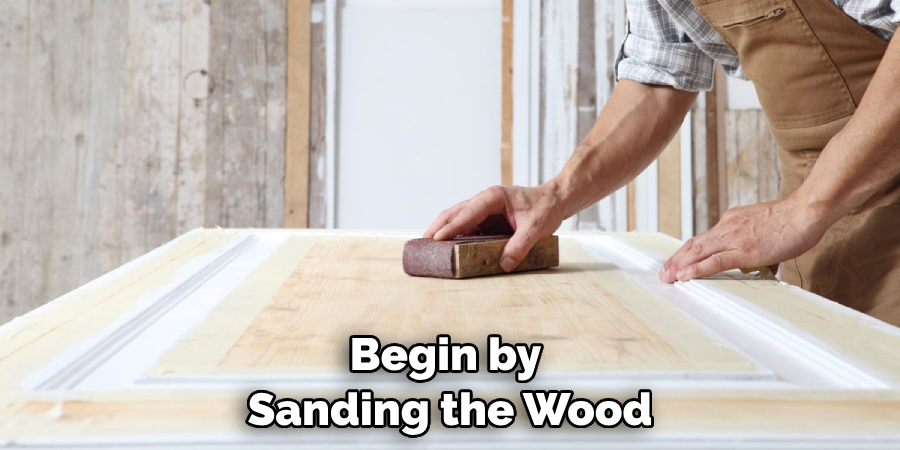
Once you’ve finished sanding, use a vacuum with a brush attachment to remove dust. Then, use a tack cloth or damp (not wet) rag to wipe down the surface and remove any debris before moving on to the next step.
Step 2. Sealing
Once you’ve applied the varnish, it’s time to seal it in. To do this, use a polyurethane finish—this will help protect the varnish from scratches and other wear and tear. Make sure to apply a thin coat of sealant with a brush or foam brush, allowing it to dry before moving on to the next step.
Step 3. Finishing
Once you’ve sealed in the varnish, it’s time to finish it off with a few coats of wax. We recommend using paste wax for this step, as it will help create a beautiful, glossy surface. Apply the wax in thin layers and buff each coat with a dry cloth before applying the next one. You may need to apply multiple coats of wax depending on your desired level of shine.
Step 4. Caring for Your Varnished Wood
Once you’ve applied the final coat of wax and achieved the desired level of shine, your varnishing project is complete. However, maintaining the new surface will require a bit of care. Clean the varnished wood only with a dry or slightly damp cloth.
Avoid using harsh chemical cleaners that might eat away at the varnish and wax layers or leave unwanted streaks and spots. If the surface gets scratched or loses its shine over time, repeat the varnishing process to restore its luster. Remember, taking good care of your varnished wood can make it look new and beautiful for years.
Step 5. Regular Maintenance
Regular maintenance is key to keeping your varnished wood looking its best. If the varnish starts to dull over time, you can easily rejuvenate it without going through the full re-varnishing process again.
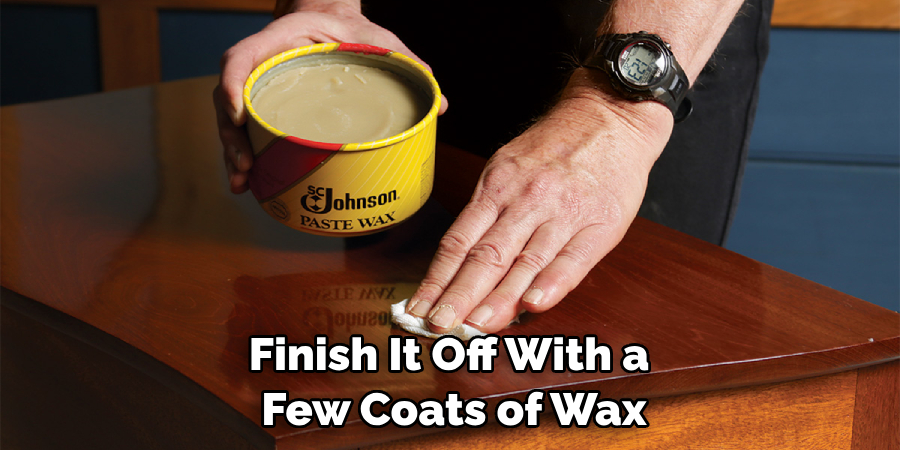
Simply clean the surface as you usually would, and then apply a thin layer of furniture polish. Wipe off any excess and buff it gently with a soft cloth. This will restore the shine and keep your wood looking its best. Regular dusting, cleaning, and monthly polish applications will ensure the longevity and beauty of your varnished wood pieces.
Step 6. Troubleshooting
Sometimes, despite your best efforts, things might go differently than planned. However, don’t worry. The most common issues with varnishing over varnished wood can be solved easily. If the varnish is not sticking to certain areas, it could be due to grease or dirt.
Clean the area thoroughly, let it dry, and try applying the varnish again. If the finish appears streaky or brush strokes are visible, it might be due to applying too much varnish at once.
Remember, applying several thin coats is better than one thick one. Always let each coat dry fully before applying the next. If you notice any drips or runs, sand them off once they’re dry and reapply the varnish. With patience and practice, you’ll be able to achieve a perfect finish!
Step 7. Cleaning Up
The final step is clean-up after successfully applying the varnish on the wood. Using a mild soap and warm water, clean all your tools thoroughly, especially the brushes you used for application. Make sure to remove all traces of varnish from them.
If left uncleaned, the varnish can harden and ruin your brushes. As for the work area, ensure it’s free of any debris or dust that might have accumulated during the process. Proper cleaning and maintenance of your tools and workspace will prepare them for any future varnishing projects you might undertake.
Step 8. Safety Measures
Working with varnish requires precautions to ensure your safety. Always ensure you work in a well-ventilated area, as varnish fumes can be harmful. Protective gloves should be worn to avoid skin contact with the varnish and wood stripper. A dust mask or respirator can be beneficial when sanding the wood to prevent inhalation of dust particles.

If varnish comes into contact with your skin, wash it off immediately with soap and water. In case of contact with your eyes, rinse them with plenty of water and seek medical attention if necessary.
Always remember to keep varnish and all other materials out of reach of children and pets. Taking these safety measures seriously will ensure that your project ends with a beautifully varnished piece of wood and is completed in the safest possible manner.
By following these simple steps, you can successfully varnish over varnished wood and create a stunning finished piece.
5 Additional Tips and Tricks
- Before you begin varnishing over varnished wood, ensure the previous layer of varnish has been thoroughly sanded down. This will ensure that the new coat of varnish adheres properly and won’t lead to any bubbling or peeling.
- When applying a new layer of varnish over an existing one, it’s best to use a brush with natural bristles. This will help the varnish spread more evenly and create a smoother finish.
- After you’ve applied your new layer of varnish, it’s important to let it dry completely before sanding down. This is especially true if you’re working on a piece of furniture that has many small details.
- When sanding down the new coat of varnish, use fine grit sandpaper to ensure a smooth surface. A medium grit sandpaper can leave small scratches and ridges in the finish that will be visible once you’re finished.
- Finally, after you’ve completed your job, make sure to give the wood an extra layer of protection by applying a top coat. This will help keep your work looking its best for years.
With these tips and tricks in mind, you can easily varnish over varnished wood with confidence.
5 Things You Should Avoid
- Don’t use a paintbrush or foam brush when varnishing over varnished wood. The bristles will leave streaks and can create an uneven finish.
- Take your time with the process by applying too much varnish in one go. This can cause the previous layer of varnish to bubble and peel away from the surface.
- Don’t use a low-grade varnish for this job. Low-grade products are often too thin and won’t stick properly, leading to an unattractive finish.
- Don’t try to sand down the new varnish coat before it fully dries. You run the risk of damaging the finish if you do this prematurely.
- Remember to apply a top coat once you’re done varnishing over varnished wood. This will help protect your work and keep it looking its best for years.
By following these tips and avoiding the ones mentioned above, you can be sure your project will turn out perfectly.
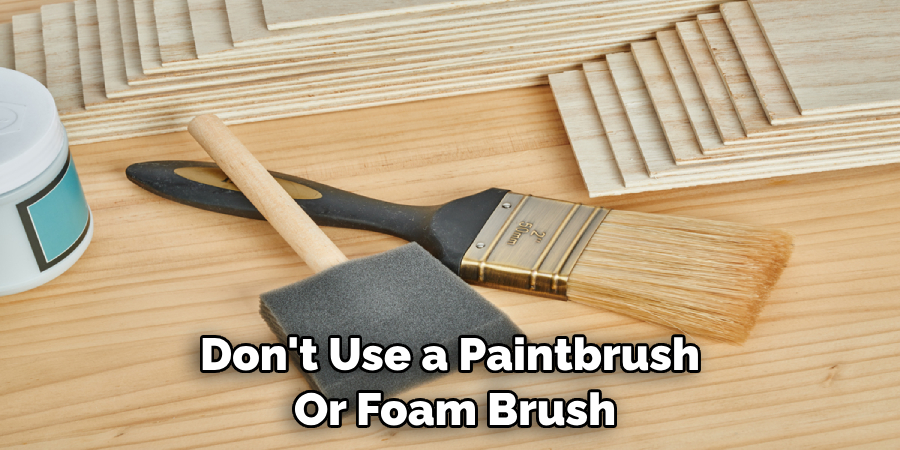
Conclusion
In conclusion, how to varnish over varnished wood can be tricky, but with the right steps and tools, it doesn’t have to be difficult. Start by sanding down the surface, removing any dirt or debris that may be present. It is also important to ensure the wood is completely dry before applying the varnish.
Experiment with different finishes until one works for you – just make sure to choose the right type of finish depending on where and how the wood will be used. After applying each layer, let the coat fully cure before adding another layer.
With proper application and technique, you can have a beautiful varnished piece that looks great and lasts for years!

